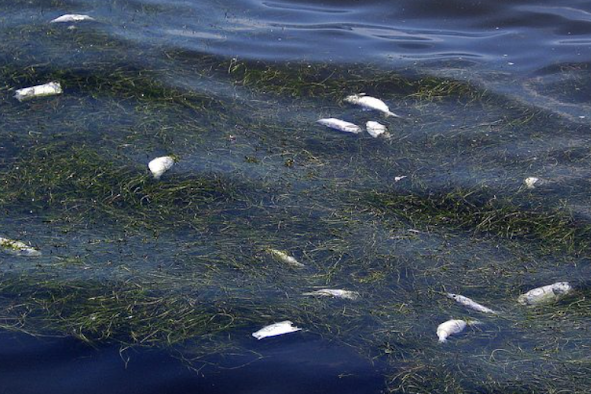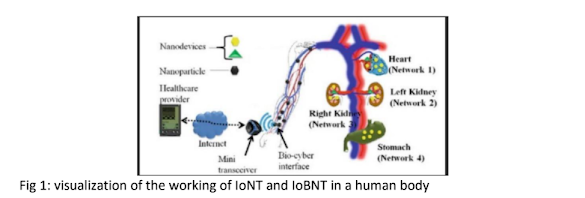Save our Oceans!
Save Our Oceans !
The ocean is said to be Earths' life support system and holds around 97% of the worlds' water as well as, covers more than 70% of the Earths' surface. We rely on it everyday for CO2 absorption, climate regulation, to replenish our freshwater system, for biomedical products, as a source of renewable energy, and still so much more! Not just the ocean itself, but we depend on marine life too. Apart from acting as a food source for over 3.5 billion people, the ocean is home to colonies of photosynthetic algae, microscopic phytoplankton, and cyanobacteria. These organisms have green pigments called chlorophyll, which allow them to photosynthesize and make food for themselves. In this process they release Oxygen to the environment, and so, contribute to around 50-85% of the oxygen available for us today. So we literally owe the air we breathe, to the oceans!
Marine habitats like mangroves, reefs and the deep ocean are the most biodiverse regions in the world. It is estimated that more than a 100 million species of marine life call the ocean their home, but we've only discovered and classified around 2 million of them so far!
Bio-luminescent fish in the deep ocean
Biodiversity in a mangrove forest
Plastic pollution and its' effects :
Today, we don't care half as much about the ocean, as we care about leisure products or simply a mid-day snack. Plastics, are one of the oceans' most deadliest foes. The first plastics were invented and produced in the year 1869, as a substitute for ivory, and since then, many different synthetic polymers were invented and the production and usage of plastic started to increase over the next few years, aided by the increased demand because of the industrial revolution. The problem of plastic pollution to the point where accumulation of plastic waste and damage they caused to wildlife, was first visible and recognized in the year 1907. However, this issue of plastic accumulation became much worse over the next few decades, when its' production and disposal had increased drastically, and in the year 1950, around 1.5 million tonnes of plastic was being produced, and in the later years, was discovered to be polluting the oceans. It was only in later years that research showed how much damage plastic does to marine life, and to humans as a consequence of micro-plastics in fish we consume.
Today, there are 5.25 trillion pieces of micro and macro plastic floating in our oceans, that amounts to nearly 270,000 tonnes of plastic. It is estimated that every square mile of ocean contains 46,000 pieces of plastic and around 8 million more pieces enter the ocean everyday. This threatens marine life, as micro plastic is often ingested by small fish, which die from the problems created when plastic deposits in their stomachs. Larger pieces of plastic cause problems too. They can get tangled around the necks of turtles and seagulls, suffocating them, or causing injuries if the pieces are wrapped too tightly around their necks, fins or legs. Larger animals like sharks, whales and dolphins which feed on these smaller animals get affected too, as the pieces of plastic attached to those animals are ingested by the larger animals, causing life-threatening problems, and often killing them. Plastic bags floating around can look deceptively like squid, so are easily mistaken by dolphins and whales. It is estimated around 100,000 marine mammals are killed every year because of plastic pollution.
No doubt, plastic is the most dangerous threat to the ocean and marine life, and we must work together to stop it. Avoid buying items that are wrapped in plastic, carry cloth bags while doing your shopping, refuse one-time-use plastic like plastic cutlery and plates and make sure to drop off any plastic waste at recycling centers, so that they do not reach the ocean. You can also go to the beach or seaside with a few friends and garbage bags, and pick up the trash left there by visitors.
Other threats :
Marine biodiversity has been declining over the past few decades, due to the problems mentioned above, and due to overfishing. Some fish species are endangered or on the verge of being endangered, and this may be due to unsustainable overfishing. This, as well as the other issues resulting in species decline, disturbs the food chain. A larger fish, depending on endangered smaller fish for food, may also become endangered or go extinct due to the lower availability of food for itself, and this continues like a chain, disrupting natural marine ecosystems. To overcome this problem, restrictions on the amount of fish that can be caught at a time, net sizes and other factors are being placed by governments and other related authorities, and fish are being bred or 'farmed' in a sustainable way. You'd be helping the oceans by supporting farmed fish, rather than purchasing fish species that have dwindling numbers.
Examples of some seafood that are sustainably fished or farmed are, abalone, mackerels, most crabs and salmon, and trout. Try to avoid imported seafood and instead, buy local, and support the local communities, and also find out how the fish has been caught. You can even inquire at other seafood stores you go to or restaurants, to know how a fish is caught, before buying them. Lastly, make sure to spread the word, inform your friends and family of the benefits of buying sustainable fish and where to buy them.
Sustainable fish farming
Many cosmetic products are derived from the ocean, like squalene, that's extracted from the livers of sharks which are sometimes hunted illegally, others contain extracts from endangered marine plant species. Jewellery is sometimes made with bits of coral and seashells, sometimes with turtle shells too. These kind of products hurt marine life and must be discouraged. Sustainability can be promoted by encouraging the use of sustainable and organic products.
Eco-tourism :
Every year, millions of trips are taken all over the world; it is something that happens everyday, and pollution created by tourism is an immeasurable amount. Tourists visiting beaches leave trash, like plastic wrappers, cups, straws and polythene bags lying around. In places where turtles hatch, these wastes get in their way, either by strangling them or preventing them from reaching the water on time. When a high tide happens, the plastic and other trash on the beach washes into the ocean.
Noise pollution is also a major concern these days. When cruise ships, jet skis' or other kinds of boats go on the water, their engines create a lot of noise, scaring marine creatures, cause them pain from the immense noise, messes with their echolocation (incase of marine mammals) and can make them change their migration patterns, or cause them to flee their natural homes. Animals exposed to this constant noise are at risk of developing high blood pressure, stress and heart problems too!
There are other ways tourism negatively impacts the marine (as well as terrestrial) environment. Flying emits carbon dioxide, a greenhouse gas which promotes global warming. Higher temperatures caused by this, result in unnatural migration patterns of fish schools, turtles, birds depending on the sea, and a lot of other animals. It also causes glaciers in the Arctic and Antarctic regions to melt or break off, destroying the homes of penguins, and disrupt the movement of orcas and minke whales, even causing them to drown. Hotels and resorts near the seashore sometimes release their sewage waste directly into the ocean, again killing marine life through toxicity. This also impacts the coral reefs, causing them to deteriorate (and subsequently results in the deaths of more marine animals, whose habitats are coral reefs) .
However, there are ways to reduce these impacts, by being an eco-tourist. Firstly, reduce long, and frequent air travels. When on vacation, use public transport to get around and use kayaks or boats with noiseless engines on water. Avoid bringing packaged food to the beach, and buy local instead. While staying at a hotel, don't ask for towels and clothes to be washed with detergents and strong soaps. If you wish to explore the marine habitat, hire an authentic, local guide, and only look around as you visit. Be careful not to disturb the environment, and don't take bits of coral or seashells as 'souvenirs'! The natural ecosystem mustn't be altered as you visit.
In recent years, more light is being shed on the lives of captive marine mammals, mostly Orcas and dolphins, and how the conditions they are kept in, and the number of performances they are required to do on a daily basis affects their mental and physical well-being. A large number of articles, videos and documentaries are available that highlight these issues, but in a nutshell, captive animals suffer in marine parks, and need to live in their natural habitat, the ocean, live with their pods and socialize, and swim for hundreds of kilometers everyday. Incredibly smart creatures, these marine mammals mustn't be confined, and injustices to them must be stopped. To help this cause, avoid going to marine parks that hold these animals captive and make them perform. Don't go to dolphin shows, then maybe one day, these animals will be freed.
Why protect the marine ecosystem?
Like all ecosystems, the marine ecosystem balances itself on the patterns of marine animals and currents. When marine animals die due to the threats posed as discussed above, it affects the animals that depend on the dead animals for food. An ecosystem consists of thousands of food chains, small aquatic plants are eaten by small fish, which are then eaten by bigger fish, that are then eaten by barracudas or sharks, and those are eaten by dolphins and orcas. When food chains get disturbed in this way, it is easy for entire species of marine animals to get wiped out, and that could have worse side effects than we imagined. People will starve from a reduced food supply, and water would not be naturally purified as the ocean does today. If phytoplankton and cyanobacteria in oceans are killed from high acidic conditions, we'd have nearly 50% lesser oxygen to breathe, and not only us, but millions of plants and other animals would die too.
Apart from our own selfish reasons why we need marine life to thrive, there is one other important reason to conserve oceans : to save the billions of lives that live in it. Not because we'd lose on a whole lot of resources, but to simply let them live. As the most biodiverse biome on earth, the ocean gives our planet immense beauty, and it is our duty to protect it at all costs (especially seeing as it is we who also destroy it).
If we all lend a hand, we can restore our oceans and the valuable resources it provides us, and save millions of species of marine life too ! Together we can save our oceans!
~ ♡ Mridini
References:
whitesharkprojects.co.za
earthcareghana.org
oceancrusaders.org/plastic-crusades/plastic-statistics/
earthcareghana.org/2020/09/28/shocking-ocean-plastic-statistics-the-threat-to-marine-life-the-ocean-humanity/
www.marinebio.org
food.allwomenstalk.com/how-to-find-sustainable-fish/
national university of singapore
www.condorferries.co.uk
wwf.org.au
www.condorferries.co.uk
www.sciencehistory.org
greenmatters.com
coral reef alliance (image)
oceanconservancy.org
www.theoceanpreneur.com
US geological survey
chris jordan (image)
blueocean.net (images)
passportocean.com
tane sinclair-taylor 2016 (image)

















Comments
Post a Comment